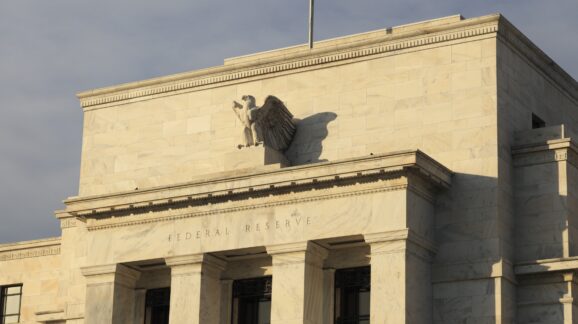The Fed’s Preferred Inflation Measure Improves, Mixed Picture on Consumer Spending

Photo Credit: Getty
Two new economic indicators published Friday morning give reason for cautious optimism. The Consumer Price Index (CPI) is the inflation measure that gets the most media attention, but the Federal Reserve stopped using it many years ago because it is noisy and tends to overstate inflation. The Fed instead uses the Personal Consumption Expenditures (PCE) index, which was just released for July. Last month, PCE rose 6.3 percent from a year earlier, down from 6.8 percent in June. This matches a decline in July’s CPI, and is another indicator that inflation may have peaked.
A reason for optimism on this front is that the timing lines up with a typical lag time for the Federal Reserve’s monetary actions to circulate through the economy. Lag times vary from six to 18 months, and that lines up with the worst of the Fed’s COVID-related runaway money creation. The Fed began rolling that back in March, so the six-month mark for that will occur in September.
When they begin to show over the next several months, the initial positive effects from the Fed’s monetary tightening will be small, because the Fed has only taken baby steps so far. Even so, July’s PCE decline gives some hope that the worst of inflation is likely over. That said, continuing supply chain problems and oil price uncertainty might keep some prices stubbornly high for non-inflation reasons.
Consumer spending increased 0.1 percent in July, down from a 1.0 percent increase in June. This is typically a weak showing, though in this case the picture is more nuanced. Gas prices declined substantially in July, so consumers were getting the same amount of gas while spending less on it. That’s a good thing. If all else had stayed equal, consumer spending would have gone down, yet people would have been better off.
The reason consumer spending stayed essentially flat is because consumers took those gas savings and spent more on other goods. This benefited the service and durable goods sectors. The amount of dollars spent was about the same, but people got more for their money. That’s good news, though tempered by the fact that spending would have increased more if real wages were not trailing behind inflation. That will likely remain a problem for several months to come.
What do today’s inflation and consumer spending numbers mean for the possibility of recession? It is difficult to tell. The National Bureau of Economic Research’s in-house decision criteria basically amount to “it’s at our discretion,” and it will likely be a few months before they make a decision anyway. So don’t read much into it either way.
It would be more productive to focus instead on solving problems. To help fight inflation, the Fed needs to continue restraining the money supply, and Congress and President Biden need to cut their spending extravaganzas. Loosening trade barriers and labor market frictions will help with supply network problems and fill more job openings.